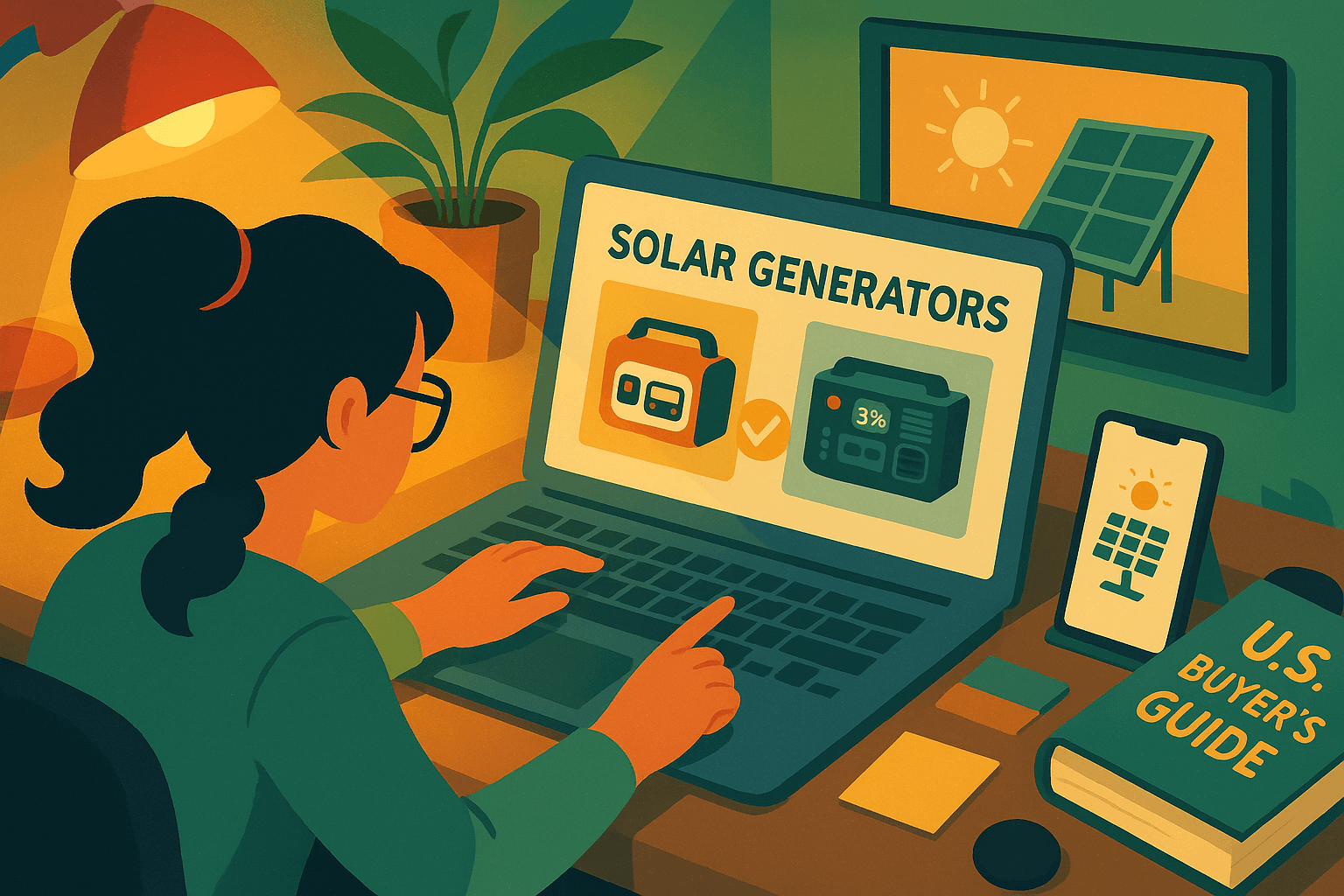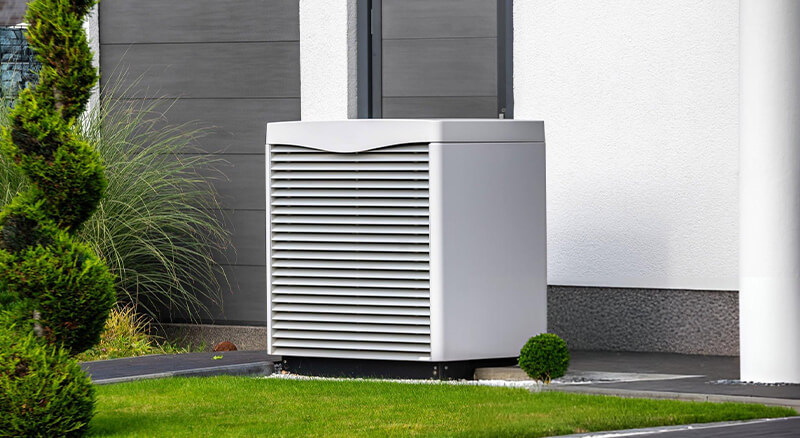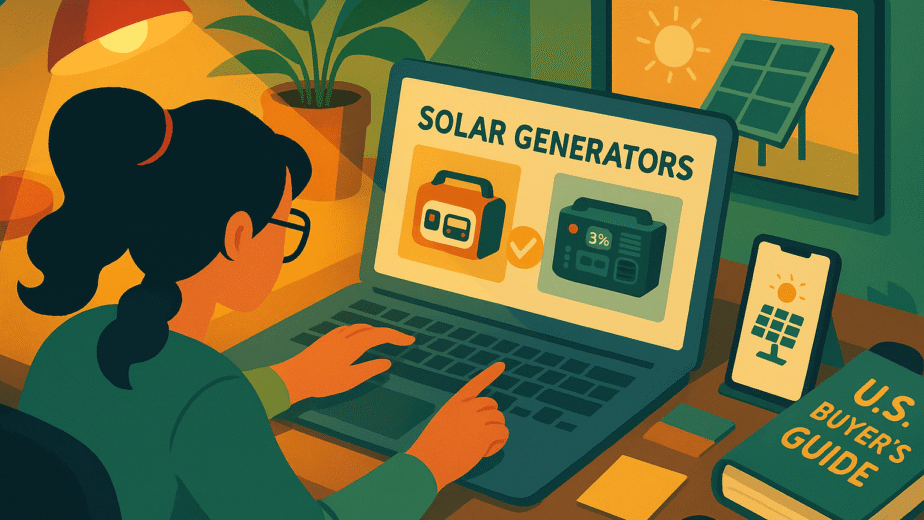The gentle hum of the refrigerator. The glow of the laptop screen. The comforting sound of a running CPAP machine. These are the small, essential comforts you take for granted, until the power grid falters. With storms growing more severe and outages lasting longer across the U.S., relying on luck is a recipe for disaster.
For years, the answer was a gas generator: loud, smelly, fuel-hungry, and impossible to run safely indoors. But the 2026 solar generator market has changed everything. And with the solar‑power market booming in North America (the sector is projected to grow from about US$632.7 million in 2025 to over US$1 billion by 2032), as per Fortune. These silent, zero-emission portable power stations are no longer just for camping; they are now a primary source of clean, reliable home and mobile backup.
Imagine the deep exhale of relief when the streetlights go dark, but your home essentials stay running. That feeling of control is priceless.
However, the sheer volume of options – from Watt-hours (Wh) to Pure Sine Wave to LiFePO4, can leave you paralyzed, afraid of sinking thousands of dollars into a system that’s obsolete by next year. You have a problem, and the clock is ticking on your home’s security.
This guide is your fast track to confidence. We’re going to cut through the marketing noise and show you the three non-negotiable technical pillars of a modern system. By the time you finish this article, you will know exactly how to size, select, and future-proof your investment in clean power, ensuring you never feel helpless when the lights go out. Ready to secure your peace of mind?
The Silent Revolution: Why the Old Rules of Backup Power Are Broken in 2025
The era of noisy, carbon-monoxide-spewing backup power is over. The modern solar generator (also known as a portable power station) is defined by silence, speed, and safety. This shift isn’t about incremental improvements; it’s a technological leap powered by two key advancements: battery chemistry and smart energy management.
If you are buying a system in 2025, you are buying a long-term safety device. Don’t compromise on these core components.
The 3 Core Pillars of a Modern Solar Generator (Avoid This $1,500 Mistake)
Buying the wrong solar generator often boils down to a failure to understand the three most critical specifications hidden on the box. Paying attention to these ensures your investment lasts for a decade or more.

Pillar 1: Battery Chemistry is Everything: Why You Need LiFePO4
This is the most crucial, yet most overlooked, detail. Many older and budget solar generators use Nickel Manganese Cobalt (NMC) batteries. NMC offered high energy density in the past, making the units lighter and smaller, but they came with a huge hidden cost: longevity and safety.
In 2025, the standard is unequivocally LiFePO4 batteries (Lithium Iron Phosphate).
- Longevity (The ROI): NMC batteries offer roughly 500 to 1,000 charge cycles before degrading to 80% capacity. A quality LiFePO4 battery, however, delivers 3,000 to 6,000 cycles. For you, this means a system used every week could last 10 to 15 years longer. The higher upfront cost of LiFePO4 systems immediately pays for itself.
- Safety (Peace of Mind): LiFePO4 chemistry is thermally stable. Unlike NMC, it is significantly less prone to overheating or combustion if punctured or abused. This stability is the reason most major brands now utilize them for home backup.
If a generator does not explicitly advertise its use of LiFePO4 batteries with a high cycle count (3000+), you should assume it is using outdated technology.
Pillar 2: Capacity vs. Usable Capacity: The Wh Myth
When comparing systems, you see the massive numbers: 1,000Wh, 2,048Wh, 4,000Wh. This is the Watt-hour (Wh) capacity—the total energy the battery can store. This is what most buyers anchor their decision to. But here’s the reality check: you cannot use 100% of the stored power.
Every time you drain a battery to zero, you shorten its total lifespan. Manufacturers often state capacity based on lab conditions that degrade the battery quickly. A high-quality system with a smart Battery Management System (BMS) is designed to operate best at an 80% Depth of Discharge (DoD) to maximize its 3,000+ cycle life.
Read also: [10 Best Eco‑Friendly Gadgets for U.S. Homes in 2025]
The real question to ask: How many Watt-hours can I safely pull out of this generator every day for the next 15 years? This requires factoring in the chemistry and cycle life, not just the massive number on the label. Always prioritize a higher-cycle LiFePO4 battery with slightly less Wh over a cheap NMC battery with a bigger Wh rating. The long-term usable capacity is what truly matters.
Pillar 3: Pure Power: Understanding Pure Sine Wave Inverters
A solar generator takes stored DC (Direct Current) battery power and converts it into AC (Alternating Current) that your home appliances use via an internal component called an inverter. There are two types of inverters: Modified Sine Wave and Pure Sine Wave.
- Modified Sine Wave: These are cheaper but produce a “choppy” power signal. This can generate heat and humming noise in sensitive electronics, eventually damaging things like laptops, medical devices (CPAP machines), power tools, and modern high-efficiency refrigerators.
- Pure Sine Wave: This produces power identical to what comes from your utility wall outlet—clean, smooth, and stable.
If you plan to power any sensitive or expensive electronics, a Pure Sine Wave inverter is non-negotiable. This is the only way to trust your solar generator to protect, rather than damage, your most vital appliances during a long outage.
Sizing Your Freedom: The Essential Watt-Hours Calculation Checklist
The biggest mistake U.S. buyers make is overspending on a unit that is too large or underspending on one that is too small for their actual needs. You need to calculate your essential Watt-hours per day.
Do it by following this simple three-step process:
List Critical Appliances and Their Wattage: Find the running wattage (W) and, crucially, the surge wattage for devices you must run during an outage. This typically includes a refrigerator (150W running, 500-1000W surge), LED lights (20W), Wi-Fi router (10W), and a laptop (50W).
Estimate Daily Usage: Determine how many hours per day (h) each item will run. (e.g., Fridge: 8 hours total compressor runtime, Lights: 6 hours, Router: 24 hours, Laptop Charging: 4 hours).
Calculate Total Watt-Hours (Wh) Needed:
TOTAL Estimated Daily Needs: 2,500 Wh
Formula: Watts (W) x Hours (h) = Watt-hours (Wh)
Example Calculation for a Mid-Sized Home:
Refrigerator: 150W x 8h = 1,200 Wh
Lights & Router: 30W x 24h = 720 Wh
Laptop Charging: 50W x 4h = 200 Wh
Sump Pump (1/4 HP): 800W x 0.5h (30 min total run time) = 400 Wh
| System Size Category | Capacity (Wh) | Ideal Use Case |
| Small Portable | 200 Wh – 500 Wh | Day trips, charging laptops/drones, car camping. |
| Mid-Range Essential | 1,000 Wh – 2,000 Wh | Multi-day power for fridge, Wi-Fi, lights, and one critical medical device (like a CPAP). |
| Home Backup/Large | 3,000 Wh – 6,000 Wh+ | Extended home backup, running sump pumps, freezers, and multiple appliances for several days. |
The 2026 Solar Generator Buying Cheat Sheet
Once you’ve confirmed the core three pillars (LiFePO4, high Wh, Pure Sine Wave), you can look at the features that define the top-tier portable power station experience in 2025. This is where you future-proof your purchase.
Speed Matters: Charging Input (Solar & AC)
In an emergency, every minute matters. Modern systems eliminate the week-long solar charge times of the past.
- Rapid AC Charging (Pattern Interruption): Look for systems with proprietary fast-charge technology (like EcoFlow’s X-Stream or Jackery’s Turbo Charge) that can go from 0% to 80% in under 2 hours from a standard wall outlet. If the grid is temporarily restored, this speed is vital for quickly banking power.
- High Solar Input: For continuous off-grid living or long-duration outages, the generator’s maximum solar input capacity (measured in Watts, W) is critical. Top-tier 2025 systems can handle 1,000W to 2,600W of solar input, allowing you to fully recharge a large 4,000 Wh battery in as little as 4 hours of peak sunlight.
The Ecosystem Advantage: Modularity and Smart Features
The largest fear (FOMO) for buyers is that their expensive unit will be outmatched by a new model next year. Modular design kills this fear, giving you the ambition to grow your power on your own terms.
Modularity: Look for systems that can accept external, add-on batteries. You can start with a 2,000 Wh base unit and add a 4,000 Wh expansion battery later. This not only allows you to scale your power as your needs (or budget) grow, but it also provides redundancy.
Smart Control: Top portable power stations now come with Wi-Fi and Bluetooth connectivity, allowing you to use a smartphone app to:
- Monitor charging speed and battery health in real-time.
- Remotely control which ports are active.
- Integrate with smart home systems for seamless, automatic switchover during an outage.
Look for a system that includes a built-in Uninterruptible Power Supply (UPS) function, ensuring your vital electronics stay powered on with a <20ms switchover time. This protects critical items like servers or fish tank pumps from even a momentary power flicker.
The Best Solar Generators of 2026 by U.S. Use Case
While technology changes fast, a few brands have dominated the 2025 market by leading the charge on LiFePO4, modularity, and rapid charging.
| Use Case | Recommended Specs | Top Brand/Model Examples (2025) |
| Home Essentials Backup | 2,000–4,000Wh, 3,000W+ Output, Modular Design | EcoFlow DELTA Pro 3, Jackery Solar Generator 2000 Plus |
| RV/Van Life | 1,000–2,000Wh, High solar input (400W+), Durable Casing | Bluetti Elite 200 V2, Anker SOLIX F2000 |
| Portable/Worksite | 500–1,000Wh, Light weight, IP65 Water Resistance | Anker SOLIX C1000, EcoFlow DELTA 3 Plus |
Conclusion: Trust, Control, and Silent Power
If you walked away with only three things from this Solar Generator Buyer’s Guide 2025, let them be these: Choose LiFePO4, calculate your true Wh need, and demand Pure Sine Wave.
The feeling of security you gain from owning a clean, silent, and scalable power system is the ultimate return on investment. You’re not just buying a battery in a box; you are purchasing control over your environment, and trust in your ability to protect your family and home when the system fails.
The future is silent, clean, and entirely off the grid – if you’re prepared.





